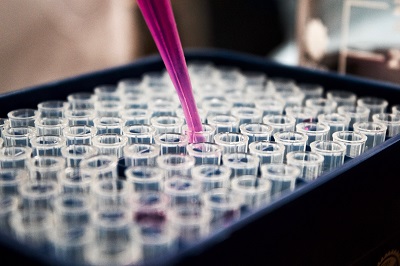To apply for Class III medical device registration with Brazil's ANVISA (Agência Nacional de Vigilância Sanitária), you must meet specific regulatory conditions and requirements. These conditions are designed to ensure that medical devices are safe, effective, and comply with Brazilian health regulations. Below are the key conditions that must be met:
1. Appointment of a Brazilian Registration Holder (BRH)
- Foreign Manufacturers: Must appoint a Brazilian Registration Holder (BRH) to submit the application on their behalf. This local entity will act as the official representative and handle communications with ANVISA.
- Brazilian Manufacturers: Can apply directly to ANVISA without the need for a BRH.
- The BRH will be responsible for ensuring compliance with local regulations, including post-market surveillance and reporting any adverse events related to the device.
2. Compliance with Brazilian Regulatory Standards
- The device must comply with Brazilian regulatory standards, including:
- RDC 185/2001 (Regulatory Resolution on medical device registration)
- RDC 510/2021 (Regulatory Resolution for post-market surveillance and quality control)
- RDC 73/2016 (Regulation for clinical studies with medical devices, if applicable)
- INMETRO Certification (if applicable): For devices that contain electrical or electromagnetic components, INMETRO certification is required to ensure electrical safety.
3. Good Manufacturing Practices (GMP) Compliance
- Manufacturers must demonstrate compliance with Good Manufacturing Practices (GMP) to ensure that the medical device is manufactured under controlled, high-quality conditions.
- For foreign manufacturers, ANVISA will require proof of GMP certification from an internationally recognized body (e.g., ISO 13485) or may conduct an inspection of the manufacturing site.
- Brazilian manufacturers must also comply with Brazilian GMP requirements.
4. Clinical Evidence
- Clinical data is a critical requirement for Class III devices, which are considered high-risk. The device must be supported by sufficient clinical evidence demonstrating its safety and effectiveness.
- This evidence may include clinical studies, clinical trials, and performance data. If clinical studies are conducted outside Brazil, they must meet international standards (e.g., GCP, ISO 14155).
- If the device is innovative or the clinical evidence is limited, additional clinical trials may be required in Brazil or in countries with regulatory systems accepted by ANVISA.
5. Risk Management and Safety Standards
- A Risk Management Plan must be submitted for the device, typically in accordance with ISO 14971, which details potential risks associated with the device and strategies to mitigate those risks.
- The plan should demonstrate that the device's benefits outweigh any identified risks and that adequate risk control measures are in place.
6. Labeling and Instructions for Use
- The device must have clear and accurate labeling that complies with ANVISA’s guidelines. This includes:
- The device name, model, and intended use.
- Warnings, contraindications, and precautions.
- The manufacturer’s information, including the address and contact details.
- Expiration dates, batch numbers, and other relevant product details.
- The Instructions for Use (IFU) must be in Portuguese, and they must provide comprehensive details on how to use the device safely and effectively.
7. Quality Management System (QMS)
- A Quality Management System (QMS) compliant with ISO 13485 (or an equivalent standard) is required for Class III medical devices. The QMS should cover:
- Manufacturing and production processes.
- Supplier and material management.
- Control of the final product’s quality.
- Documentation of the QMS must be included in the registration application.
8. Submission of the Registration Application through ANVISA's Solicita System
- The registration application must be submitted via ANVISA’s electronic platform, Solicita.
- Foreign applicants must work through their Brazilian Registration Holder (BRH), who will submit the application and the associated documents.
- The application must include all necessary documents, including the technical dossier, clinical data, labeling, and proof of GMP certification.
9. Payment of Registration Fees
- There is a registration fee that must be paid when submitting the application. The fee varies depending on the type and complexity of the device and must be paid through the Solicita system.
- Payment of this fee is a condition for processing the registration application.
10. Compliance with Post-Market Surveillance Requirements
- After the device is registered, you must comply with post-market surveillance obligations, which include:
- Adverse event reporting: Manufacturers must report any serious incidents or adverse events associated with the device.
- Periodic safety update reports (PSUR), as required by ANVISA.
- Device recalls if safety issues are identified.
11. Good Clinical Practice (GCP) Compliance (if applicable)
- For devices that require clinical trials, these trials must be conducted in compliance with Good Clinical Practice (GCP), as outlined in RDC 73/2016 and ISO 14155.
- If clinical data from trials conducted outside Brazil is submitted, the data must adhere to these international standards.
12. Technical Documentation and Translation
- All submitted documents must be in Portuguese. If the original documents are in another language (such as English), they must be professionally translated into Portuguese.
- This includes clinical data, labeling, instructions for use, and any technical documents supporting the device's safety and efficacy.
Summary of Conditions to Apply for Class III Registration
- Appoint a Brazilian Registration Holder (BRH) (for foreign manufacturers).
- Ensure compliance with Brazilian standards (e.g., RDC 185/2001, RDC 510/2021).
- Demonstrate compliance with Good Manufacturing Practices (GMP).
- Provide clinical evidence demonstrating safety and efficacy.
- Submit a risk management report in line with ISO 14971.
- Provide Portuguese-language labeling and instructions for use.
- Maintain a Quality Management System (QMS) compliant with ISO 13485.
- Submit the application through ANVISA’s Solicita system.
- Pay the registration fees.
By meeting these conditions, you will ensure that your Class III medical device can be successfully registered with ANVISA and comply with Brazil's stringent regulatory requirements for medical devices.

Contact Us:
Whatsapp or Wechat:+86 15816864648;email address:hito.lin@grzan.cn
.png)
.jpg)

.png)

.png)